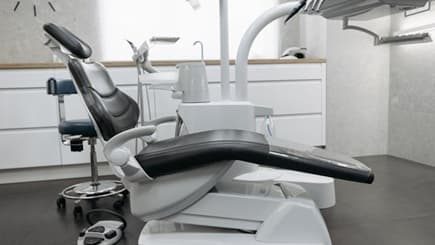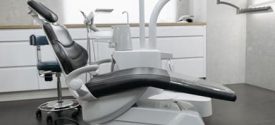Depreciation Recapture: How to Unlock Tax Breaks & Save Money
Selling business assets feels like a win, until the récupération des amortissements bill arrives. That bakery owner celebrating their oven upgrade? They weren’t expecting past depreciation deductions to morph into ordinary income tax.
Depreciation recapture is the IRS’s way of clawing back those sweet annual write-offs when you sell equipment or property above its adjusted cost basis. Think of it as a tax boomerang: what went out (savings) comes back (liability).
But here’s the kicker: strategic moves can soften the blow. This guide cracks open real-world tactics, from 1031 exchanges to basis-tracking hacks, so your windfall doesn’t vanish. We’ll demystify calculations, expose common traps, and yes, save you money. Ready to flip recapture from threat to opportunity?
What is depreciation recapture?
Depreciation recapture is the IRS’s method of reclaiming tax benefits from past depreciation deductions when you sell business assets above their adjusted cost basis. Think of it as a settlement day: those annual write-offs for wear-and-tear? If your equipment or property sells for more than its depreciated value, the taxman demands a cut of the profits.
Take a commercial HVAC installer selling a $90,000 truck after claiming $60,000 in depreciation expense. If it fetches $50,000, $20,000 above its $30,000 basis, that “gain” isn’t pure les plus-values. The IRS recaptures up to $20,000 (lesser of depreciation taken or gain) as ordinary income.
Why this clawback? Section 1245 property (equipment) faces your top tax rate, while real estate (Section 1250) caps at 25%. Skeptical? Check the IRS’s own recapture playbook.
Brutal truth: Even assets sold below original cost trigger recapture if above basis. Track base ajustée like your profit depends on it, because it does.
How does depreciation recapture work?
Depreciation recapture springs to life at sale time. Sell business assets above their adjusted cost basis? That gain splits into two parts: the recapture amount (taxed as ordinary income) and true les plus-values (lower rates). Simple? Not quite.
Picture a food truck owner: Paid $70k for the rig, claimed $45k in depreciation expense, then sold it for $50k. The base ajustée is $25k ($70k – $45k), creating a $25k gain. Here’s the IRS twist: All $25k gets recaptured as ordinary income because it’s less than total depreciation. Had it sold for $80k? Only $45k would face ordinary rates; the extra $10k enjoys capital gains treatment.
Real estate gets kinder rules. Sell a section 1250 property like an apartment building? Recapture caps at 25%. Equipment (Section 1245 assets)? Brace for your top tax bracket.

Gotcha alert: Even “loss” sales trigger recapture if price exceeds basis. Sold that old printer for $500 when basis was $200? $300 gets recaptured. Track every depreciation schedule, or risk nasty surprises.
How to calculate depreciation recapture
Crunching depreciation recapture numbers feels like IRS algebra, but three steps unlock it. First, nail the adjusted cost basis: original price minus total depreciation expense. Mess this up? Everything collapses.
The formula demystified:
- Basis check: Original cost – accumulated depreciation.
- Gain calculation: Sale price – adjusted basis.
- Recapture reality: Lesser of total depreciation taken or gain.
Take a concrete saw for a construction firm: Bought at $15,000, $9,000 in depreciation deductions, sold for $11,000. Adjusted basis? $6,000. Gain? $5,000. Recapture? $5,000 (lesser of $9k depreciation or $5k gain), all ordinary income tax. Had it sold for $20,000? Only $9k recaptured; the extra $5k gets capital gains rates.
| Asset | Purchase price | Amortissement | Sale price | Recapture tax |
|---|---|---|---|---|
| Tattoo chair | $8,000 | $6,500 | $4,000 | $2,500 (Ordinary) |
| Warehouse | $300,000 | $80,000 | $400,000 | $20,000 (25% Cap) |
Red flag: Many forget state recapture rules. California taxes equipment recapture at up to 13.3%, no federal cap mimicry. Always cross-check IRS Publication 544.
Pro’s secret: Utilisation formulaire 4797 Part III for recapture math. It’s the IRS’s own cheat sheet, ignore it at your peril.
Smart strategies to minimize depreciation recapture
Depreciation recapture doesn’t have to be a tax ambush. Savvy owners deploy these battle-tested plays:
- 1031 exchange magic: Swap investment properties for like-kind assets? You’ll defer all recapture and capital gains. That dentist unloading her $1M office for a surgery center? Zero taxes, if she follows IRS section 1031 timing rules. Gold standard move.
- Capital loss harvesting: Offset equipment recapture gains with stock losses. That crypto trader’s $50k Bitcoin bath last year? Now it neutralizes his bulldozer sale. Ironic relief.
- Death & step-up basis: Hold assets until death. Heirs inherit property at fair market value, erasing recapture. A grim but genius exit for rental moguls.
- Cost segregation caution: Accelerate deductions via cost segregation studies? Sure! but higher future recapture lurks. Best for cash-strapped landlords, not flippers.
- Primary residence gambit: Convert rentals to your home. After 2+ years, the Section 121 exclusion shields $250k/$500k gains. Risky? Absolutely. But that Airbnb host turned homeowner dodged $37k in taxes.
Pro’s warning: State rules vary wildly. New Jersey taxes recapture as ordinary income, no federal caps. Always run numbers before selling.
Common depreciation recapture mistakes
Depreciation recapture blindsides even sharp owners. These slip-ups torch profits:
- Botched basis tracking: That bakery’s oven? Owner forgot a $15k upgrade. Adjusted cost basis was off by $10k, triggering $3k in extra recapture taxes. Ouch. Always update Formulaire 4562 annually.
- State rule blindness: Sell equipment in California? Recapture gains face up to 13.3% ordinary income tax, no federal cap mimicry. New York’s sneaky too.
- Exit plan amnesia: Selling a business? Goodwill allocations reduce recapture… but that craft brewery owner ignored it. Cost him $28k.
- Passive activity fumbles: Rental losses suspended under PAL rules? Can’t offset recapture gains. Brutal truth.
Pro’s rant: Skipping tableaux d'amortissement is financial Russian roulette. The IRS always finds old Form 4797s. Audit-proof yours yesterday.
Depreciation recapture FAQs
Q: Can you completely avoid depreciation recapture?
A: Only two escapes exist: 1031 exchanges (deferral) or holding assets until death (step-up in basis wipes it). That brewery owner’s heirs? They sold his $1.2M building tax-free. Poof! recapture vanished.
Q: Is recapture taxed as capital gains?
A: Rarely. Equipment faces ordinary income rates (ouch! up to 37%). Real estate gets a 25% cap. California? Adds its own 13.3% kicker.
Q: How far back can the IRS audit recapture?
A : Typically 3–6 years. But that dentist who skipped Form 4797? They dug 8 years deep. Meticulous records are your armor.
Conclusion: Shield your sale from the tax boomerang
Depreciation recapture turns yesterday’s tax savings into today’s liabilities. That bakery’s oven sale sting? It’s the brutal truth: neglected basis tracking or rushed Form 4797 filings invite IRS grenades. Consider the auto shop owner who ignored passive activity loss rules, his $42k recapture bill devoured his equipment upgrade fund. Overnight disaster.
But savvy strategists flip the threat. Through 1031 exchanges, precision timing, and capital loss harvesting, they transform tax landmines into opportunities. Why leave money on the table? Small businesses mastering these moves protect profits and fuel growth.
This is your pivot point: Schedule a free asset-sale audit with H&S Accounting & Tax Services. We’ll dissect your depreciation history, unmask hidden liabilities, and lock in savings before your next transaction. Act now, the taxman’s stopwatch is ticking.






